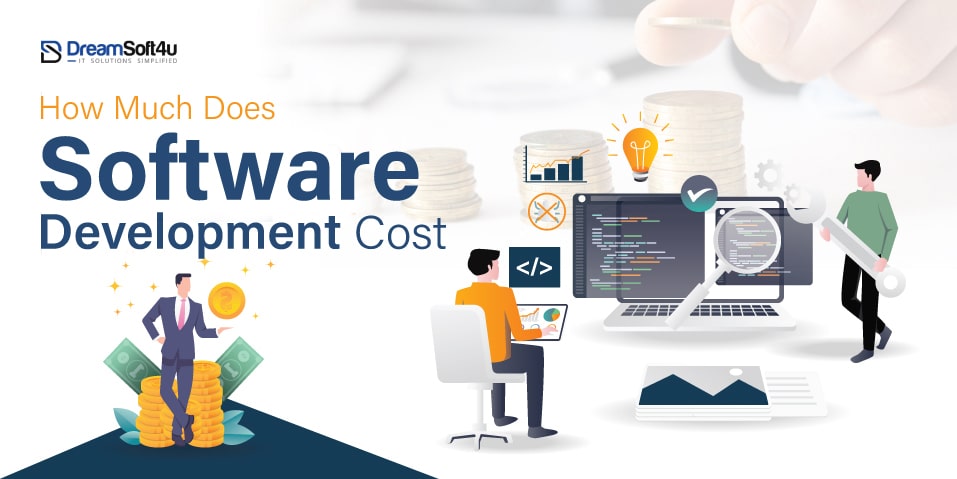Medical imaging plays a crucial role in saving lives. It helps doctors detect and diagnose diseases. Such as cancer, appendicitis, stroke and heart disease. Plus, the growing advancement of technology also helps healthcare organizations level up their diagnosis by merging AI with medical imaging and DICOM trends.
AI-based diagnostics achieve highly accurate results within minutes, not hours. These innovations are enhancing diagnostic accuracy, workflow efficiency and patient care. And ensuring seamless data sharing across healthcare networks.
There is so much to explore in medical imaging that every healthcare organization should know.
In this blog, we will explore some of the biggest DICOM Trends shaping the future of the industry and how these changes will help doctors and patients.
Table of Contents
ToggleAdvancing Medical Imaging: Key Tech Trends

Let us explore some key DICOM Trends and medical imaging:
AI-Powered Image Analysis
Artificial intelligence is revolutionizing medical imaging. It makes diagnosis faster and more accurate. AI algorithms can automatically detect abnormalities. Such as tumours, fractures or infections. With the help of X-rays, MRIs and CT scans. They also help segment organs and compare past and present scans. Plus generates reports, reducing the workload for radiologists. This improves efficiency, enhances early disease detection, and speeds up the diagnostic process. Which ultimately leads to better patient outcomes.
Personalized Medicine Through Imaging
Not everyone’s body is the same. So medical imaging is becoming more personalized. Doctors use AI, which analyzes genetic data, medical history, and previous scans. To customize imaging techniques and adjust factors like radiation dose and contrast agents. This ensures more precise diagnostics, minimizes unnecessary radiation exposure, and improves treatment planning. It makes healthcare safer and more effective.
IoT Connectivity
The IoT is making medical imaging software development smarter. By connecting imaging machines, wearable devices and hospital systems. IoT-based imaging devices allow real-time data sharing. Plus it enables doctors to access results instantly and monitor patients remotely. It also helps hospitals manage machine maintenance. Which reduces downtime and ensures that imaging systems operate efficiently. So it improves healthcare delivery.
Nuclear Imaging
Nuclear imaging is a special type of scan. It helps doctors see how organs are working inside the body. It uses a tiny amount of radioactive material called a radiotracer. Which the patient either swallows or gets through an injection. This material travels to the area being examined. And a special camera captures images. Doctors use nuclear imaging to detect diseases. Such as cancer, thyroid problems and Alzheimer’s early.
Wearables
Wearable devices are not just for tracking heart rates anymore. Scientists are developing brain imaging headsets. Which is used to monitor seizures and brain activity in real time. Other wearables, like portable ultrasound scanners. It helps doctors scan organs at home instead of in hospitals. These innovations make healthcare more accessible and convenient.
3D Visualization and AR/VR for Surgical Planning
Surgeons can now use 3D images of a patient’s body. Which helps in pre-surgical planning, intraoperative guidance and post-surgical analysis. AR/VR enhances training for medical students and improves precision in complex procedures. It leads to safer surgeries and better patient outcomes. This makes surgeries safer, faster and more precise. Which improves patient recovery.
Cloud-Based PACS and Remote Data Access
Cloud-based PACS are replacing traditional storage of medical images. Instead of storing medical images in one. Now hospitals use cloud-based storage to access scans from anywhere. This makes it easy for different doctors to collaborate, and speeds up diagnoses. And allows patients to get second opinions without visiting multiple hospitals. It also saves hospitals money on physical storage.
Real-Time Imaging and Telehealth Integration
Medical imaging is becoming accessible through telehealth. It allows doctors to analyze scans and consult with patients remotely. Real-time imaging enables instant diagnosis. This is especially useful in emergencies. Where quick decisions can save lives. It also allows remote specialists to assist in surgeries or monitor patients from home.
Workflow Automation in Radiology
AI helps streamline radiology by handling repetitive tasks. Such as image pre-processing, report generation and data organization. Automated systems prioritize urgent cases, flag abnormalities for faster review, and assist radiologists in making informed decisions. This reduces workload, and prevents delays in diagnosis. And lets doctors focus on treating patients rather than paperwork.
Quantitative Imaging and Radiomics
Tiny changes in medical images can detect some diseases. Which might be missed by the human eye. Radiomics uses AI to extract details from images. It helps doctors predict how a disease will progress. And which treatment will work best. This technology helps predict disease progression, guide treatment plans and personalize therapies. By integrating AI and big data. Radiomics enhances precision medicine. And enables early intervention for diseases like cancer and neurological disorders.
Multimodal Imaging Integration
Different imaging techniques like CT, MRI and ultrasound provide unique insights. However, combining them offers a more comprehensive view of a patient’s health. Multimodal imaging integrates these technologies to improve diagnosis and treatment planning. For example, combining PET and MRI scans can detect cancerous tumours more accurately. Merging CT and ultrasound images enhances heart disease assessments. This approach leads to more precise and holistic patient care.
Cybersecurity and Data Privacy
As medical imaging moves to the cloud and digital platforms. Protecting patient data is more critical than ever. With increasing cyber threats. Healthcare providers must invest in robust security systems. Mainly to prevent breaches, maintain compliance with regulations and safeguard patient trust. Cybersecurity measures like encryption, blockchain technology and multi-factor authentication. It ensures sensitive medical records and images remain secure. This keeps patient records safe. While ensuring doctors can still access important medical images when needed.
Benefits of Integrating Technologies in DICOM and Medical Imaging

Did you know? As per recent stats, the global medical imaging market is expected to reach $62.48 billion by 2033 with a CAGR of 5.8%. Integrating advanced technologies with DICOM trends and medical imaging improves in multiple ways. Here is how each benefit makes a difference:
Improved Diagnostic Accuracy
AI-based image analysis helps doctors detect diseases more accurately. By identifying tiny details that the human eye may miss. It can recognize patterns in scans. Which indicate conditions like cancer, brain disorders or heart disease. AI in medical imaging also assists in predicting disease progression. It allows doctors to make better treatment decisions. Plus reduces the risk of human error.
Faster Image Processing and Report Generation
AI and automation speed up the process of analyzing medical images. It reduces the time doctors spend reviewing scans. AI can highlight important details and even create reports quickly. Which helps doctors focus on urgent cases. This means patients get results and treatment faster.
Improved Surgical Planning and Visualization
AR, VR and 3D imaging help doctors see organs and tissues more clearly. Before and during surgery. These tools allow surgeons to practice procedures in a virtual environment. It improves precision and reduces risks. This makes surgeries safer and more effective.
Enhanced Collaboration and Remote Access
Cloud-based DICOM viewers let doctors share and access medical images from anywhere. Specialists can work together in real time. To make better diagnoses and treatment plans. This is especially useful for telemedicine. Where doctors can consult with patients remotely.
Stronger Data Security and Privacy
Advanced encryption and blockchain technology help protect patient data from cyber threats and unauthorized access. Plus it ensures compliance with regulations like HIPAA and GDPR. And maintaining patient confidentiality.
Challenges in Adopting New Technologies
There are various challenges in adopting new technologies in DICOM and medical imaging:
- Compatibility with Existing Systems: Many hospitals use older imaging systems. Which may not work well with new AI, AR or IoT technologies. Upgrading or replacing these systems can be expensive.
- Data Security and Privacy Risks: Medical images contain sensitive patient information. Using cloud storage and AI-powered tools. It can increase the risk of data breaches. Strong security measures are needed to protect patient privacy.
- High Implementation Costs: Advanced imaging technologies. Such as AI-powered diagnostics and 3D visualization, require a lot of investment. Smaller hospitals and clinics may struggle to afford these upgrades.
- Data Storage and Management Issues: Modern imaging techniques generate massive amounts of data. Hospitals need secure and efficient storage solutions. Which is used to handle this data. While ensuring quick access when needed.
- Regulatory and Compliance Challenges: Medical imaging technologies must meet strict government regulations. Before they can be used. Getting approval takes time and effort. Which can delay innovation and adoption in hospitals.
Future Outlook for DICOM Trends and Medical Imaging
The future of DICOM trends and medical imaging is evolving. With advanced technologies like AI, AR/VR and IoT. AI will enhance diagnostic accuracy by detecting diseases earlier. At the same time, AR and VR will improve surgical planning. IoT will enable real-time data sharing for better patient monitoring. Cloud-based solutions will allow seamless access to imaging data from anywhere. As these technologies integrate further. Medical imaging will become more precise, efficient, and accessible. Which leads to better patient care and streamlined workflows in healthcare.
Looking for DICOM and Medical Imaging Software Development?
We’ve a team of skilled professionals who can turn your vision into reality
Conclusion
The future of medical imaging is becoming smarter. Thanks to AI, AR/VR, IoT, and cloud technology, healthcare is becoming easier and faster to access and provide better patient care. However, healthcare organizations need to consider various challenges while implementing advanced technologies. We hope this guide helps you understand the role of DICOM and medical imaging, how it saves people’s lives, and some future DICOM Trends that will shape the future of healthcare.
So, if you want to implement advanced technologies, consider hiring an experienced software development company like DreamSoft4U. We have 20+ years of experience, highly skilled professionals, and cutting-edge technologies to deliver custom solutions at the best price.
FAQs
Q1. What is the role of AI in medical imaging?
AI helps doctors spot diseases more quickly and accurately. By analyzing medical images. It can detect tiny details that might be missed. Which makes diagnoses more reliable.
Q2. How does cloud-based PACS benefit medical imaging?
It lets doctors access and share medical images from anywhere. Making collaboration easier and speeding up patient diagnoses. Plus, it saves hospitals money on storage.
Q3. How does IoT improve medical imaging?
IoT connects imaging machines and hospital systems. Which allows real-time data sharing and remote monitoring. This helps doctors track patient conditions more efficiently.
Q4. What are the major challenges in adopting new technologies in medical imaging?
Some major issues include high costs, difficulty integrating with older systems and strict regulations. Which slows down adoption.
Q5. Why is cybersecurity important in medical imaging?
Medical scans contain private patient info. So strong security is needed to prevent hackers from stealing data. And keep everything compliant with healthcare laws.
Q6. What is multimodal imaging, and why is it important?
It combines different types of scans. Such as CT, MRI and PET. Which gives doctors a clearer picture of what is happening in the body. And it leads to better diagnoses and treatments.























